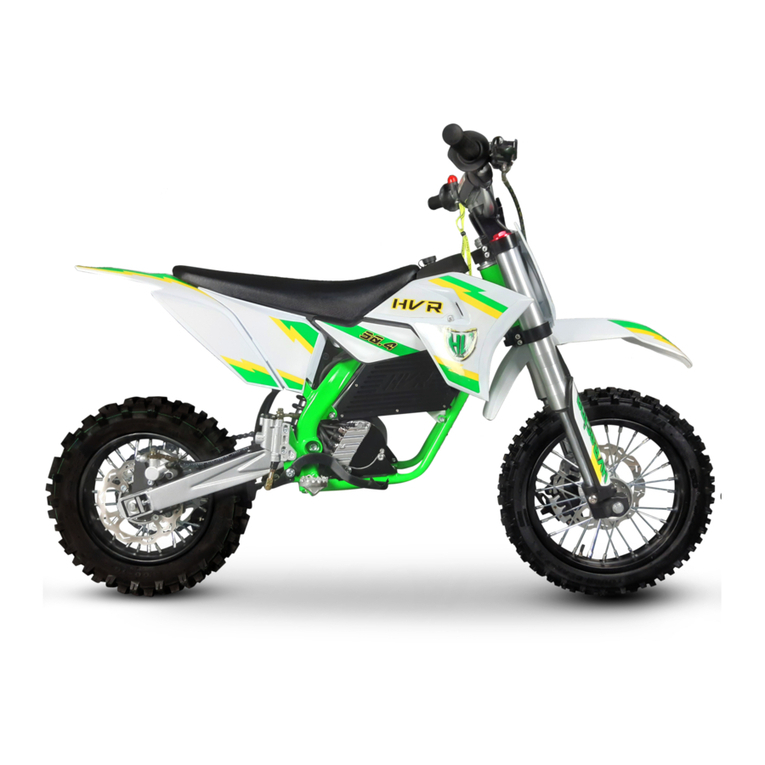
Page 5 of 36 HVR Manual
2. SAFETY NOTE
WARNING:
Read this manual carefully before operating the HVR!
To ensure safe and long operation, please observe the following instructions:
- Your child must be in the mental and physical condition to ride a motorcycle
- The minimum age is 6 years
- Cycling is the basic requirement for motorcycling
- Explain to your child how to handle the motorcycle and discuss this with your child in a way that
he or she understands the safe handling of the motorcycle
- Rotating parts such as chain, sprocket, wheels, etc. pose injury hazards for fingers and others
body parts, therefore, be sure to keep a safe distance in operation
- Never let your child ride a motorcycle unattended
- Your child must always wear appropriate protective clothing (motorcycle helmet, protectors,
motorcycle boots, gloves, etc.)
- The safety equipment must always be in proper condition
- Be a good role model and always wear protective clothing when riding a motorcycle
- Explain to your child the riding technique and the controls of the motorcycle
- Ensure the correct power and speed setting that can be used by
of your child and control this setting
- The charging of the motorcycle may only be carried out by an adult, as well as the
review before each trip and maintenance
- The charging process must be supervised by an adult
- Do not urge your child to ride above his or her abilities
- In order to participate in races, your child must have appropriate experience and be in the correct
physical and mental state.
- The wrist strap of the safety switch can be worn on the left arm while riding
to switch off the motorcycle in the event of an accident.
- The maximum rider weight is 50kg for the HVR 50.4 and 70kg for the HVR 60.4 each
including full equipment!
- Visit a training course at a motorsport club with experienced trainers
- The braking system can get very hot while driving, touch it only after a
long cooling period.
- If not in use, remove the tear-off switch to protect against unauthorised use




























